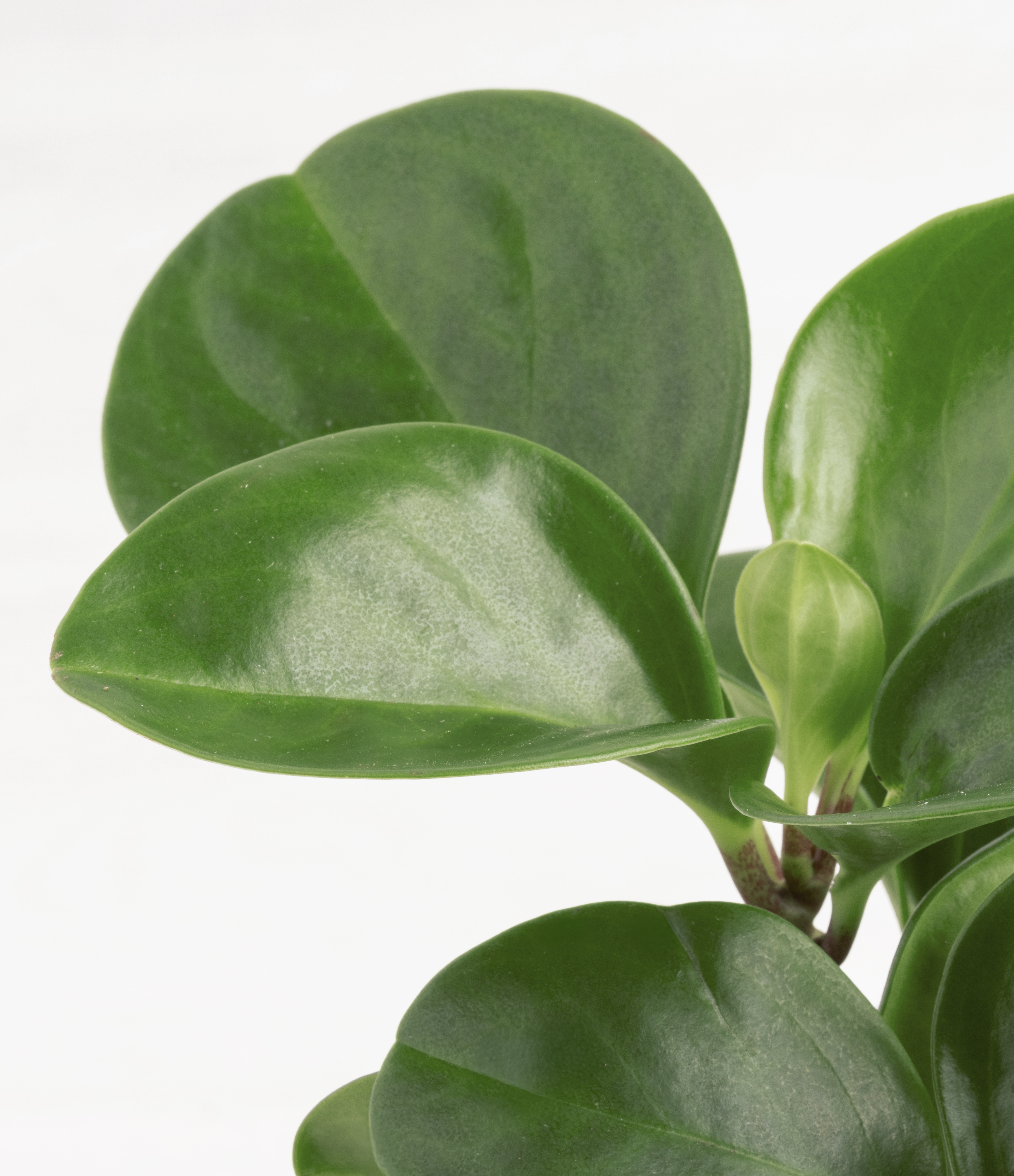How to Care for Peperomia
Shop this plantAbout Peperomia
Peperomia is a jovial master of adaptation, with large, rounded leaves in a rich forest green. In its native South American rainforests, Peperomia grows as an epiphyte, often perched on tree trunks. Over time, it has learned to store water and adjust naturally to changing conditions, making it an ideal houseplant for both novice and experienced plant parents alike.
Other common names
- Baby rubber plant
- Pepper Elder
- Radiator plant
- Shining bush plant
- Emerald ripper pepper
How Often Should I Water My Peperomia?
With easyplant, watering your Peperomia is simple. Make sure to check the easyplant reservoir once every 3 months and fill it if empty, and you’re all set!
Peperomia Light Needs
Peperomia grows best in a well lit space with bright direct or indirect sunlight, and can adapt to spaces with medium to low light, where the source of light is further away. Avoid placing it in spaces without natural sunlight.
For best results, keep it a few feet from a bright window or on a well-lit shelf where it can enjoy steady, indirect rays.
Peperomia Plant Care
Peperomia is very tolerant and hard to kill, making it an easy-care plant that will quickly bounce back from any mishap. To help it grow optimally and evenly, occasionally dust the leaves with a soft cloth to keep them clean and healthy, and rotate the pot by a ¼ turn once a month so all sides receive equal light. To maintain its aesthetic shape and height, you may periodically prune old, yellowing, or unruly leaves, which will also encourage fresh growth and keep the plant looking vibrant. Over time, if your Peperomia outgrows its pot, easyplant offers a repotting kit with a larger vessel designed to give your plant more room to thrive while preserving its natural beauty.
How Big Will My Peperomia Grow?
Indoors, Peperomia typically grows up to 12 inches tall and wide, making it a compact and well-suited choice for tabletops, desks, and shelves. Its slow-growing nature means it adds only a few inches each year, keeping its size manageable and its shape neat. While it won’t grow into a large floor plant, its lush foliage and rounded form make it a charming accent for small spaces.
Temperature & Humidity
Peperomia thrives in average household conditions, preferring temperatures between 65°F and 80°F. Keep it away from cold drafts, open windows in winter, or sudden temperature drops below 60°F, as these can stress the plant. It also enjoys moderate humidity, which is generally consistent in most homes, and does well without the need for any special adjustments. Avoid placing your Peperomia near heating vents or air conditioning units, which can create dry or fluctuating conditions.
Is Peperomia Toxic for Pets & Kids?
Peperomia is considered non-toxic to both pets and kids, making it a safe choice for households with curious little ones or furry friends. While it won’t cause harm if accidentally nibbled, it’s still best to keep plants out of reach to prevent mess or stress to the plant.
Troubleshooting Common Problems with Peperomia
If your Peperomia’s leaves start to yellow or feel mushy, it may be a sign of overwatering. For easyplant users, simply following the reservoir refill schedule every 3 months prevents this issue. For non-easyplant users, allow the soil to dry out more thoroughly before watering again. If leaves begin curling or drooping, your Peperomia may not be getting enough water - check the soil and reservoir and adjust as needed. Older leaves at the base naturally dry and fall off over time, which is normal and nothing to worry about. Peperomia can occasionally attract pests like mealybugs or spider mites. If you spot them, wipe the affected leaves gently with a cotton swab dipped in rubbing alcohol to remove them. Keeping leaves dust-free and rotating your plant helps prevent most issues.
Frequently Asked Questions about Peperomia Plant
- How often should I refill the self-watering planter for my succulent?
Only once every 3 months! Our self-watering system ensures your succulent gets the exact amount of water it needs.
- Why don't easyplant pots have drainage holes?
Our innovative self-watering design maintains optimal soil moisture without drainage holes, ensuring healthy roots and a clean, mess-free experience.
- What makes easyplant succulents different from regular succulents?
easyplant succulents are specially chosen for indoor success, come pre-potted in optimal soil, and utilize our self-watering technology to prevent common issues like overwatering and root rot.
- How fast does Peperomia grow?
Peperomia is a slow-growing plant, usually adding just a few inches of growth each year. Its compact size makes it perfect for small spaces.
- Why are my Peperomia’s leaves curling?
Leaf curling often signals underwatering or that the plant is receiving too much direct sunlight. Check the soil moisture and move your Peperomia a few feet away from harsh sun.
- Can Peperomia tolerate low light?
Yes, Peperomia can adapt to medium and even low light, though it will grow more slowly. Avoid placing it in spaces with no natural light at all.
